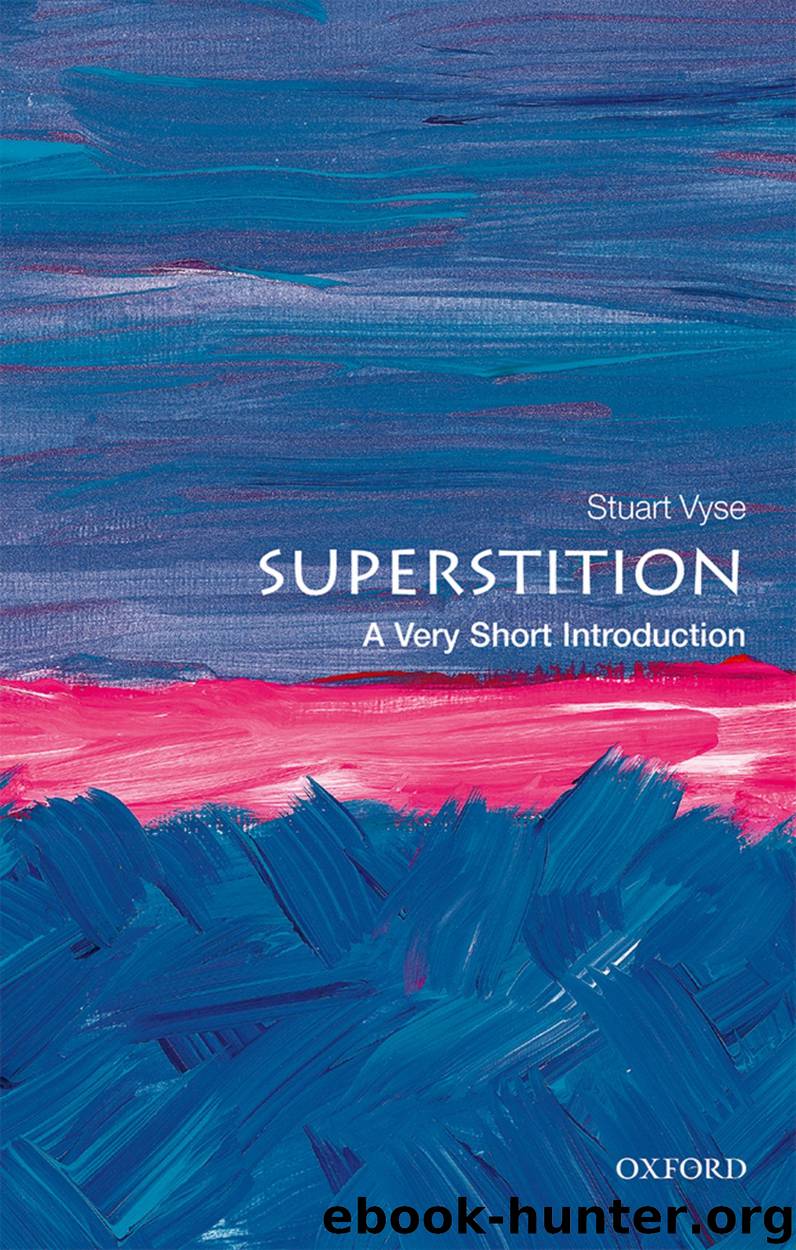Superstition by Stuart Vyse

Author:Stuart Vyse
Language: eng
Format: epub
ISBN: 9780192551320
Publisher: OUP Oxford
Published: 2019-11-24T16:00:00+00:00
Spiritualism and science
Mesmerism and spiritualism arrived when modern science was still quite young, and both played a role in the development of scientific methods of testing. Despite the objections of people like Reverend Morrison, the Enlightenment established that the new standard for superstition would be evidence and reason, and as a result, post-Enlightenment spiritualism and science had a kind of twinned existence that was not true of earlier eras. There had always been elites who were sceptical of magicians and sorcerers, as well as of common superstitions, but for the first time, religious objections were secondary to empirical scepticism. In the case of spiritualism, the most common hypotheses were either an unconscious alliance among the participants or simple fraud, and there were many examples of both.
In the case of mesmerism, patients appeared to adopt a hypnotic role and exhibit a kind of placebo response. After a difficult start, Franz Mesmer established a very successful practice in Paris in the 1780s. Wealthy Parisians and members of the nobility became devoted followers, and the growing popularity of Mesmer’s unorthodox methods raised concerns among physicians and the government. In 1784 King Louis XVI (1754–93) established a Royal Commission to investigate Mesmer, and, among others, Benjamin Franklin, America’s Minister Plenipotentiary to France, was appointed to the commission. The commissioners submitted to being magnetized themselves, but, unlike Mesmer’s patients, they felt nothing at all. They went on to conduct some simple experiments. The commissioners found that, when blindfolded, patients could not detect where, on their bodies, magnetization was being applied, yet when they could see, patients reported strong sensations at the correct location. In another test, when offered successive cups of water, only one of which was magnetized, patients were unable to identify the correct cup. The commission concluded that ‘the imagination is the real cause of the effects attributed to magnetism’. Interestingly, once it had been established that there was no actual effect of animal magnetism, Franklin was not convinced this was sufficient reason to prohibit Mesmer’s methods. As we will see, this kind of ambivalence is still seen today in response to many superstitions and placebo-like medical therapies.
Although ‘imagination’ was undoubtedly an important factor in the success of many spiritualist mediums, simple fraud was also rampant. On 21 October 1888, Margaret Fox (by then Margaret Fox Kane) published a signed confession in the New York World newspaper admitting that she and her sisters had faked the knocking noises. They had developed the ability to crack the joints in their feet with sufficient volume to be heard in a large room. Other examples of fraud were common. The magician Harry Houdini became devoted to the cause of exposing unscrupulous mediums, publishing two books on the subject of his investigations. Psychical research societies were founded in both the United States and Europe, and although most of their members were believers in the possibility of communication with spirits, they took an active role in uncovering charlatans. The American psychologist William James (1842–1910) was a founding member
Download
This site does not store any files on its server. We only index and link to content provided by other sites. Please contact the content providers to delete copyright contents if any and email us, we'll remove relevant links or contents immediately.
Should I Stay or Should I Go? by Ramani Durvasula(7621)
Why We Sleep: Unlocking the Power of Sleep and Dreams by Matthew Walker(6651)
Fear by Osho(4695)
Flow by Mihaly Csikszentmihalyi(4656)
Rising Strong by Brene Brown(4410)
Why We Sleep by Matthew Walker(4394)
The Hacking of the American Mind by Robert H. Lustig(4336)
How to Change Your Mind by Michael Pollan(4312)
Too Much and Not the Mood by Durga Chew-Bose(4301)
Lost Connections by Johann Hari(4133)
He's Just Not That Into You by Greg Behrendt & Liz Tuccillo(3855)
Evolve Your Brain by Joe Dispenza(3631)
The Courage to Be Disliked by Ichiro Kishimi & Fumitake Koga(3435)
Crazy Is My Superpower by A.J. Mendez Brooks(3356)
In Cold Blood by Truman Capote(3343)
Resisting Happiness by Matthew Kelly(3321)
What If This Were Enough? by Heather Havrilesky(3286)
The Book of Human Emotions by Tiffany Watt Smith(3265)
Descartes' Error by Antonio Damasio(3247)
